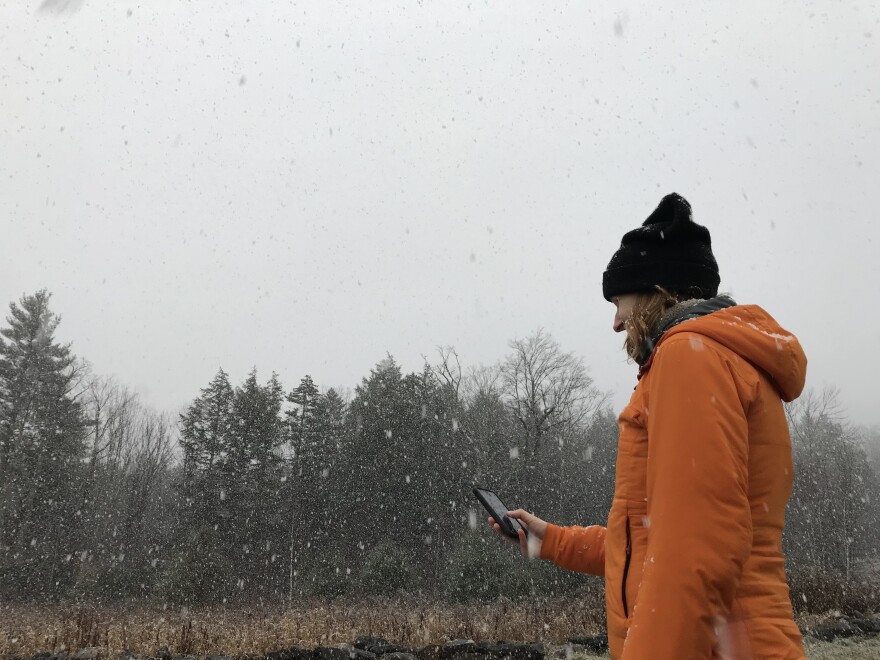News brief
Researchers have developed a snow and rain tracker that gathers data from citizen scientists in an effort to improve the accuracy of avalanche warnings, road conditions and water management. Now, NASA's providing additional funding to expand the project to more parts of the Mountain West.
We all know that the freezing point is 32 degrees Fahrenheit. But when it's slightly warmer, it can be hard to tell if it’s raining or snowing. That's because humidity and other factors affect the threshold between the two.
“You're driving in your car and you notice that it's 36, 37 Fahrenheit, but there's snow freezing,” said Meghan Collins, an associate research scientist in science communication at the Desert Research Institute. “Then you have a direct experience of the phenomenon that is so challenging for hydrologists and water managers and other forecasters.”
There are many satellite-based tools and computer algorithms that measure several different aspects of weather. Lots of people have inexpensive rain gauges and thermometers right in their backyard. But the tools that exist to measure when rain changes to snow – and vice versa – are expensive and not always accurate.

These complex conditions are why Collins and other researchers developed the Mountain Rain or Snow project in 2019. It relies on citizens to submit real-time weather observations. That data – which has largely focused on the Sierra Nevada region and the Colorado Rocky Mountains – is helping researchers learn more about the precipitation phase patterns in the West.
“Humans putting that down on a phone or writing it in a log book is really the only way we can reliably get this information over a large spatial extent sometimes,” said Keith Jennings, a water resources scientist who leads the project.
The accuracy of the data is crucial for rain- and snow-related forecasting – and Jennings said it will become even more so as the earth continues to heat up.
“(Snow) is very sensitive to climate warming,” he said. “So in some locations, you notch up that average temperature by a degree Fahrenheit or two degrees Fahrenheit, that means all of a sudden you're getting 10 to 15% less snow. Even if you had the same volume of precipitation falling as rain instead of snow, it still produces some pretty fundamental differences.”
In 2021, nearly 900 citizen scientists submitted more than 15,000 observations to the Mountain Rain or Snow project.
Its success convinced NASA’s Citizen Science for Earth Systems Program to fund an additional three years of research, allowing the project to expand to the Wasatch Range near Salt Lake City and Western Montana around Missoula, among other locations.
“The Mountain West is a place that has really diverse communities, highly urbanized communities and very rural [communities],” Collins said. “This is an opportunity to put your community, your area on the map for science, because all of these observations matter.”
Anyone interested in contributing observations can sign up via text. Visit the project's website for details. After signing up, observers will have access to an app to start tracking rain and snow, providing on-the-ground precipitation data satellites can't.
This story was produced by the Mountain West News Bureau, a collaboration between Wyoming Public Media, Nevada Public Radio, Boise State Public Radio in Idaho, KUNR in Nevada, the O'Connor Center for the Rocky Mountain West in Montana, KUNC in Colorado, KUNM in New Mexico, with support from affiliate stations across the region. Funding for the Mountain West News Bureau is provided in part by the Corporation for Public Broadcasting.
Copyright 2023 KUNC. To see more, visit KUNC. 9(MDAyMjQ1NzYwMDEyMjU5MjA0MjE0Yzg1Mg004))








